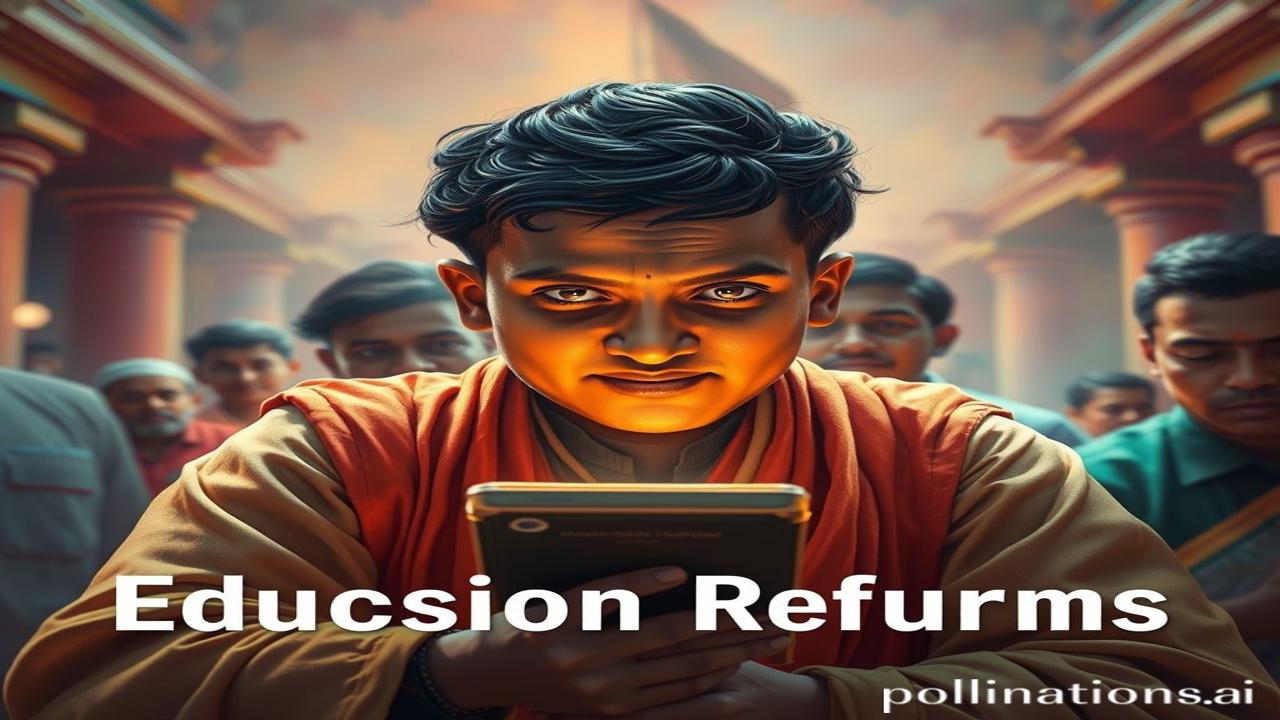Waqt Ke Panno Mein: Education Reforms – A Glimpse into India’s Past
Kabhi socha hai, jo blackboard aaj school mein dikhta hai, uski shuruaat kahan se hui? Ya phir, woh gurukul ki shaanti, jahaan vedon ki dhwani goonjti thi, woh aaj bhi humare andar kyun basi hai? Waqt ki dhool mein kuch kahaniyan chhup jaati hain, lekin education reforms unmein se nahi hain. They’re woven into the very fabric of India’s progress, a constant quest for knowledge and enlightenment.
The Seeds of Knowledge: Historical & Cultural Context
Let’s rewind the clock. When we talk about education reforms, we’re not just talking about the British era or the post-independence changes. We’re talking about a journey that began millennia ago. Think about the Indus Valley Civilization (circa 3300-1700 BCE), jahaan planned cities and standardized weights dikhate hain ki education and systematic knowledge was clearly valued.
Then came the Vedic period (circa 1500-500 BCE) with the rise of Gurukuls. Gurukuls were residential schools, often located in ashrams, where students learnt from their Guru. The emphasis was on holistic development – not just bookish knowledge (though Vedas, Upanishads, and scriptures were central), but also life skills, philosophy, and character building. Yeh ek tarah se ‘total personality development’ tha! Think of places like Takshashila (modern-day Taxila in Pakistan) and Nalanda University, which became world-renowned centers of learning, attracting students from across Asia. Nalanda, in its prime (5th to 12th centuries CE), housed thousands of students and teachers, with a curriculum that included philosophy, medicine, astronomy, and more.
The medieval period saw the influence of Islamic scholarship, with the establishment of madrasas alongside traditional Hindu centers of learning. The arrival of the British in the 18th and 19th centuries brought about a significant shift, introducing a more Western-style education system. Lord Macaulay’s Minute on Education (1835) advocated for prioritizing English education to create a class of Indians who would be “Indian in blood and colour, but English in tastes, in opinions, in morals and in intellect.” This marked a crucial turning point, laying the foundation for the modern education system we have today, with all its pros and cons.
ज़मीनी सच – लोग और जीवन / Deep Dive with Human Element
Imagine a young boy, Arun, in a gurukul centuries ago. Ma-bap usko Guru Dakshina ke saath, ashram mein chhod jaate. His day would begin before sunrise, with prayers and yoga. He’d learn Sanskrit shlokas, the intricacies of mathematics, and the skills of archery. He’d help with daily chores, collect firewood, and serve his guru. Evening would be filled with storytelling around a crackling fire, tales of gods, heroes, and moral dilemmas. Life was simple, but deeply enriching.
Now fast forward to a bustling Mughal-era madrasa. Fatima, a bright young girl, attends classes, learning Arabic, Persian, and Islamic theology. She dreams of becoming a scholar, translating ancient texts, and contributing to the intellectual discourse of her time. Women education was not as common but the existence of spaces where women could be educated shows the value placed on acquiring knowledge.
And then, imagine a student, Ramesh, in a British-era school in the 19th century. He wears a uniform, learns English, and studies subjects like history, geography, and science. He aspires to become a government officer, a symbol of modernity and progress. But he also feels a disconnect from his cultural roots, a tension between tradition and modernity.
धरोहर और पहचान / Cultural Significance Today
The echoes of these past education systems resonate in today’s India. The emphasis on holistic development in gurukuls finds a reflection in modern progressive schools that focus on extracurricular activities and character building. The value placed on debate and critical thinking in ancient Indian philosophy continues to inspire intellectual discourse. Even the rote learning that sometimes plagues our current system can be traced back to the emphasis on memorization in certain aspects of traditional learning.
Bharatiyata – the essence of Indianness – is inextricably linked to our educational heritage. The values of respect for teachers (Guru Shishya Parampara), the pursuit of knowledge as a spiritual quest, and the emphasis on ethical conduct, all stem from our rich educational past. These values continue to shape our identity and inform our aspirations for the future of education.
मजेदार तथ्य या भ्रम-भंजक / Fun Fact or Myth-Buster
Myth: Britishers brought the concept of formal education to India.
Truth: India had a sophisticated education system long before the British arrived. Centers like Nalanda and Takshashila were international hubs of learning centuries before European universities came into existence. The British system, while introducing new disciplines and methods, also disrupted indigenous systems that had been thriving for centuries.
दृश्य और भावनाएं / Visual & Sensory Layer
Imagine the scent of sandalwood incense filling the air of a gurukul. The smooth, cool touch of granite floors under bare feet. The rhythmic chanting of Vedic hymns, echoing through the halls. The rustling of palm leaves as students wrote on them with sharpened reeds. Or the vibrant colors of a Mughal-era madrasa, the intricate calligraphy adorning the walls, the murmur of students reciting verses from the Quran. Feel the weight of ancient texts in your hands, the collective wisdom of generations. The cool quiet of a dark library.
अंतिम विचार या उद्धरण / Closing Insight or Quote
Our educational past is not just a collection of facts and dates; it is a tapestry woven with the threads of human aspirations, struggles, and triumphs. It reminds us that the quest for knowledge is an eternal one, and that true education is about more than just acquiring information – it’s about cultivating wisdom, compassion, and a deep understanding of ourselves and the world around us.
“Tamso ma jyotirgamaya” – Lead us from darkness to light. This ancient prayer encapsulates the essence of education, a journey towards enlightenment and understanding. The path may have evolved, but the destination remains the same – a brighter, more informed, and more compassionate future for all.
